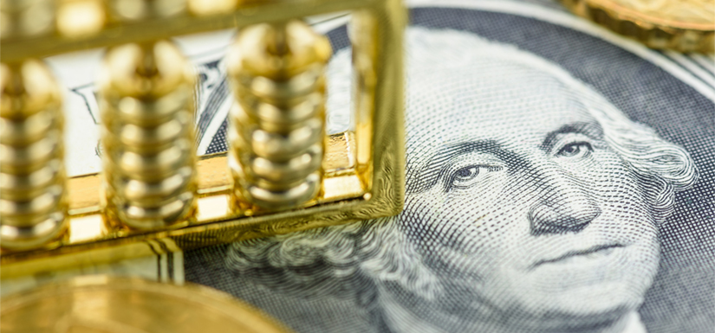A closer look at rising US yields

The recent rise in US treasury yields has quickly become the key market theme of the moment. Yields on US government bonds have been quietly on the rise since summer 2020, however over the last few months this subtle increase has attracted much larger momentum with yields on the 10 year note rallying an impressive 71% so far this year, matching the moves seen off last year's lows in just two months. We've seen similar moves in the benchmark 30-year yield.
A Little bit about Yields & T-bills
Quick roundup for anyone not completely familiar with yields and treasury bills. Treasury bills are US government issued debt, the yield on them is the return the investor gets for purchasing the debt and move inversely with price e.g., as the price of the bill goes down, the yield gets higher and as the price gets higher the yield gets lower.
Now, when the economy is performing well, yields typically rise as price falls. This is because, there are better returns to be found elsewhere and so traders turn away from T-bills, hence the drop-in price and rise in yields. Similarly, during the bad times (yes, we know them well) price tends to rise as demand for T-bills increases with traders looking to store their capital with the surety of US government backing, leaving yields to fall.
Yields are also a reflection of inflation expectations and Fed expectations. For example, if traders judge that inflation is likely to rise and the Fed is likely to tighten policy, yields start to rise as traders begin to look elsewhere. Similarly, if inflation expectations are falling and the Fed looks likely to ease, yields start to rise as traders rush into the safety of T-bills.
What Is Driving Yields Higher?
Ok, so now that we are on the same page, we can talk about what is currently happening to drive up treasury yields and why it is important.
Inflation Expectations
Inflation expectations are rising. Quickly. The US economy has just gone through the roughest patch since the Great Depression and now traders anticipate that the economy has hit a turning point. With the US vaccination programme motoring ahead and Biden pledging to make vaccines available to all US citizens by July, traders are expecting the recovery to really start to accelerate over Q2.
Stimulus Expectations
These inflation expectations are also being lifted by current and forecast US fiscal stimulus. The $900 billion stimulus package approved ahead of the Trump-Biden transition took effect in January and had tangible results. Retail Sales and Durable Goods were both much higher than expected with manufacturing soaring also. With the US administration now looking to pass a $1.9 trillion fiscal package, traders are anticipating that this will help ignite the US economy further. What's more, with social restrictions and lockdown measures looking likely to ease on broader scale over Q2, traders are anticipating that the re-opening will see a surge in spending, helping to lift inflation. The latest set of manufacturing data released this week showed that producer prices have been surging over recent months as a result of the pandemic and will need to be passed on to consumers are some point, again pushing inflation higher.
Fed Expectations
Now, the key implication of this lift in inflation expectations and yields is that traders are also speculating that the Fed will be forced to scale out of its current, record easing ahead of time. The Fed stated last year that rates would be kept at current levels until at least March 2023, with asset purchases due to run through that time also. However, the question of tapering has not been given such a clear timeline. Traders are anticipating that if inflation does spike firmly higher in the coming months, with yields taking the Dollar higher, the Fed will be forced to begin tapering out of its current asset purchases, which would push the US Dollar further higher.
How has the Fed Responded so Far?
So far, the Fed has downplayed this view and said that these inflationary fears are overblown. Notably, the central bank has also said that it is willing to allow inflation to run hot in the short term meaning that it won't be looking to raise rates as inflation hits 2% as it has done traditionally, and instead will be targeting a return to maximum employment. So, the big question now is whether the Fed is correct in its assessment and no adjustments will be necessary or whether the speculators are correct, and the Fed will be forced to start tapering its monetary easing later this year.
In the meantime, let's take a look at the technicals.
US 30Y

Following the breakout above the bearish trend line from 2018 highs, the 30-year yield has been moving steadily higher within the bull channel which has framed the rally. Yield recently broke above the 2.099 level, which has just held as support upon being retested. While above here, the focus is on a continuation higher within the channel and a test of the 2.451 level next. To the downside, any break below the 2.099 level will put focus on the channel low and the 1.760 level next.
The article was submitted by Tickmill's Research Team.
Disclaimer: The material provided is for information purposes only and should not be considered as investment advice. The views, information, or opinions expressed in the text belong solely to the authors, and not to the authors' employer, organization, committee or other group or individual or company.
High Risk Warning: CFDs are complex instruments
and come with a high risk of losing money rapidly due to leverage. 75% and 65%
of retail investor accounts lose money when trading CFDs with Tickmill UK Ltd
and Tickmill Europe Ltd respectively. You should consider whether you
understand how CFDs work and whether you can afford to take the high risk of
losing your money.




